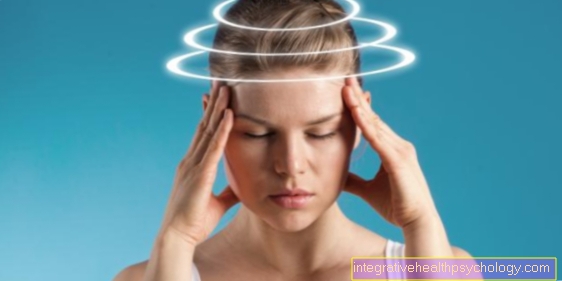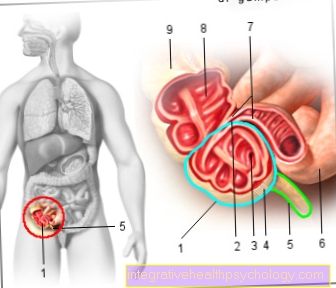Medicines for irregular heartbeat
- Synonyms
- introduction
- Therapy of a heartbeat that is too slow / bradycardiac arrhythmias
- Therapy of a too fast heartbeat / tachyarrhythmic cardiac arrhythmia
- Class I antiarrhythmics: sodium channel blockers
Synonyms
Antiarrythmics
introduction
Antiarrhythmics are a group of drugs that are used to treat cardiac arrhythmias. In the case of cardiac arrhythmias, a distinction is made between a heartbeat that is too slow and too fast. A heartbeat that is too slow is when the heart beats less than 60 beats per minute at rest (bradycardiac arrhythmia). If the heart beats faster than 100 times a minute when at rest, it is called a tachycardiac arrhythmia. There is also an irregularly beating heart. The heart rate can be too slow, too fast or normal. It is also important whether the disorders in the auricle (supraventricular) or the ventricles (ventricular) and whether the conduction from atrium to ventricle is disturbed (e.g. AV block).

The heart action is an electro-mechanical process in which the flow of the ions sodium, calcium and potassium, as well as the interplay of heart muscle cells and cells that form the electrical signal (Sinus node) and forwarding (AV nodes, etc.), are important. It should be noted that antiarrhythmics (Medicines for irregular heartbeat) are in turn able to trigger cardiac arrhythmias themselves, they are proarrhythmogenic.
Therapy of a heartbeat that is too slow / bradycardiac arrhythmias
In the Acute therapy of cardiac arrhythmias there are two drug groups available, which target the autonomic nervous system Act. This nervous system consists of one sympathetic part (Sympathetic), which, in addition to numerous other tasks, has the task of increasing the heart rate, and one parasympathetic part (Parasympathetic nervous system), which slows down the heart rate. If the heartbeat is too slow, the parasympathetic component can be slowed down (Parasympatholytics) or the sympathetic part promoted (Sympathomimetics) become. To the Parasympatholytics belong e.g. the substances Atropine or Ipratropium. examples for Sympathomimetics are adrenaline or Orciprenaline. As long-term therapy there is a Pacemaker the means of choice.
Therapy of a too fast heartbeat / tachyarrhythmic cardiac arrhythmia
This group of antiarrhythmics is after Vaughan-Williams in classes I - IV assigned.
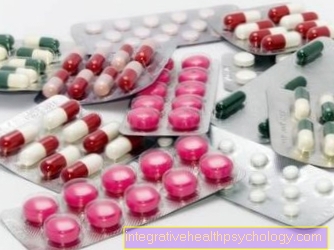
Class I antiarrhythmics: sodium channel blockers
In this class of Antiarrhythmics (Medicines for irregular heartbeat) are substances that use sodium channels (Sodium channel blockers) block on the cell membrane of the heart cells. The way over the membrane through the channel into the cell is then blocked for the sodium ion. The substances only block the path when the channel is open or inactive (use dependency). The cell membrane is stabilized. The ability to trigger electrical signals is reduced and the heartbeat slows down. The blockage also extends the recovery time for these sodium channels. As a result, the likelihood of an early and therefore irregular heartbeat decreases.
The Class I Antiarrhythmics are divided into three subclasses according to the recovery time of the sodium channel:
- l Class - IA - quinidine-type antiarrhythmics: They block the rapid influx of sodium and are more likely because of the side effects and interactions 2nd choice means
- l Class - IB - Lidocaine-type antiarrhythmics: They are heavily use-dependent and only block the sodium channel in the inactive state at high heart rates. With slower heartbeats, the substance diffuses out of the duct and becomes ineffective.
- l Class - IC - Antiarrhythmics: They block slowly, ensure a long recovery time for the sodium channels and are not use dependent.
Of the Class I Antiarrhythmics especially come the substances Ajmaline (Class IA), Lidocaine (Class IB) and Propafenone (Class IC) for use. They are mainly used for cardiac arrhythmias that affect the ventricles (ventricular tachycardias).
Contraindications are a Heart failure (Heart failure), the first three months after a Heart attack as well as a AV block (a form of cardiac arrhythmia in which the conduction of excitation from atrium to chamber is disturbed).
Class II antiarrhythmics: beta blockers
Main goal of this Class of antiarrhythmic drugs are the beta receptors of the stimulation and conduction system, above all Sinus node and AV node. The sinus node lies in the area of the Atria and is the place where electrical activity in the heart normally arises. Then the signal is sent to the AV node. This acts as a kind of filter and ensures the orderly transfer of excitation to the ventricles. Beta blockers inhibit the excitability of the sinus node and strengthen the filter function of the AV node. The faster the heart beats, the more pronounced the beta blockade is. They are usually well tolerated and are particularly suitable for a fast heartbeat emanating from the atria (Sinus tachycardia, supraventricular tachycardia) as well as from outside of the basic rhythm occurring heartbeats emanating from the chamber (ventricular extrasystoles).
Class III antiarrhythmics: potassium channel blockers
At this Class of antiarrhythmic drugs (Medicines for irregular heartbeat) are substances that block potassium channels. Potassium is important for the regression of electrical activity. If these potassium channels are blocked, the ion can no longer flow out of the cell as well. The cells remain excited longer (absolute refractory phase is extended) and is better protected from new excitations that occur too early.
Potassium channel blockers are less proarrhythmogenic than that Class I Antiarrhythmics. They are used for serious, refractory arrhythmias. In addition, they can also be used for heart failure. They are also being used increasingly for Atrial fibrillation.
Lead substance this class is that Amiodarone (Cordarex). It blocks both sodium, potassium and calcium channels, thus lowers the heart rate and protects against excitement that occurs too early or that occurs outside of the basic rhythm. During the application, the time until the amiodarone has broken down must be observed (Elimination half-life up to 100 days) because the substance accumulates in the tissue. Therapy therefore begins with eight to ten days of taking high doses (600-1000 mg per day). A maintenance dose of 100-200 mg per day follows. After five days, a break of two days must be observed. This places high demands on the cooperation of the person concerned. Furthermore, the iodine atoms contained in amiodarone Disorders in thyroid function trigger.
Class IV antiarrhythmics: calcium channel blockers
At this Class of antiarrhythmic drugs (Medicines for irregular heartbeat) are substances which calcium channels (slow, voltage-dependent L-type channels) To block. This is how the excitation is triggered in the Sinus and AV nodes and makes the conduction of excitation difficult.They are use dependent and only block the channels if they are open or inactive. They are used for arrhythmias that originate in the atrium (supraventricular tachycardias). Example substances are Verapamil, Gallopamil and Diltiazem.
Further points of attack from antiarrythmics
- Stimulation of the parasympathetic part of the autonomic nervous system: This is where the substances come Digoxin and Digitoxin for use. These are so-called. Cardiac glycosides. The effect is shown by stimulating the nuclei of the Vagus nerve, the main effector of the Parasympathetic nervous system, whose kernels are in brain lie. Since the parasympathetic nervous system only works in the area of the auricles, this explains itself Application for cardiac arrhythmias (Medicines for irregular heartbeat)emanating from the courtyards (supraventricular tachycardias, atrial fibrillation). Cardiac glycosides may not be administered in disorders that originate from the chambers (ventricular arrhythmias), because they then Ventricular fibrillation can trigger.
- Stimulation of the adenosine receptor: Thereby specific Potassium channels openlocated in the sinus node. The cell remains inexcitable longer. Also be Calcium channels blockedwhich affects the routing of the AV node. The substance is suitable for seizure-like disorders that originate in the atrium (paroxysmal supraventricular tachycardia). The substance must not be given in the case of an AV block.
- magnesium in high doses inhibits the transmission of excitation.
- HCN channel blockage: The Cells in the sinus node have another channel that lets the ions potassium and sodium through. The inhibitor is used Ivabradineif at Herzge (stable Angina pectoris) Beta blockers cannot be given.
Side effects
Side effects include Restlessness, fear, Risk of tachyarrhythmias.
Exclusion of liability / disclaimer
We would like to point out that medication must never be discontinued, applied or changed independently without consulting your doctor.
Please note that we cannot claim that our texts are complete or correct. The information may be out of date due to current developments.




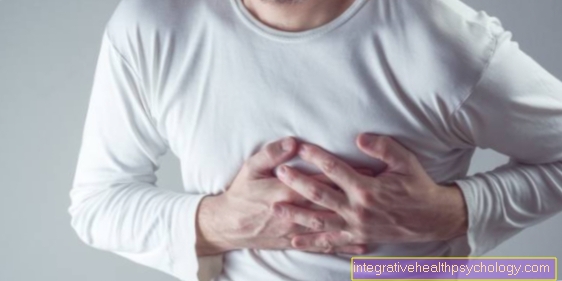









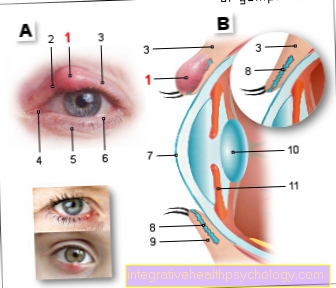









.jpg)
